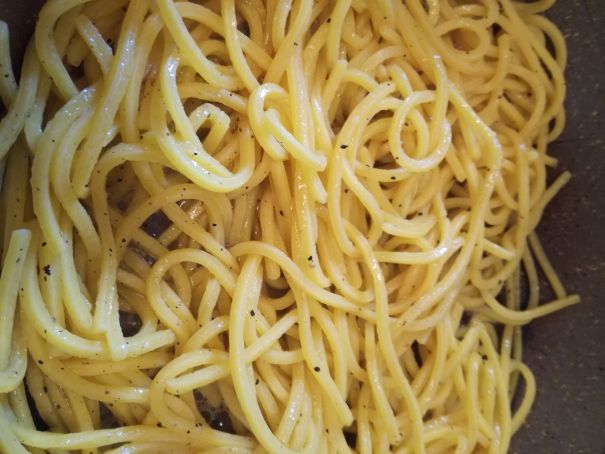Cacio e Pepe is a classic Roman pasta tradition which, until recently, was somewhat unknown outside of Italy.
However, the last couple of years have seen the international food scene embrace this simple dish which was born from humble necessity, giving it a more glamorous lease of life.
The dish originated in the Lazio countryside where shepherds would pack food to carry with them on the long journeys to move their flocks.
Alongside cured meat products they would also take chunks of the local aged sheep milk cheese (which did not need refrigeration), handmade flour and water pasta that could be eaten dried for carbohydrates, and black pepper to stimulate warmth.
These three ingredients eventually involved into the pasta dish we know and love, and the origins underline once and for all that there is no place for butter or oil in the authentic recipe.
Nowadays cacio e pepe is usually served with a long, square-cut, fresh egg pasta called tonnarelli which gives an added richness to the dish and speeds up cooking time, but normal dried spaghetti can also be used. As with most seemingly easy recipes, the trick is in the timing and testing the perfect ratio of ingredients.
Sadly, overcooking and not enough mixing will often result in a sticky, unpleasant final dish rather than the silky, creamy cheese sauce with a punch of pepper which constitutes the perfect result.
The recipe below utilises a little-known trick of heating the pepper in a pan of water to infuse the flavour before finishing the cooking of the pasta in the peppery liquid. Extra starchy cooking water and continuous mixing of the cheese should ensure the right consistency but, as any Roman will tell you, practice makes perfect.
Serves 2
250g fresh tonnarelli
70g pecorino romano, finely grated
190ml cold water
26 twists freshly ground black pepper
Bring a large saucepan of salted water to the boil.
In a separate frying pan, heat 190ml of cold water and twist in the black pepper with a pepper mill. Cook on a medium heat until it just begins to simmer.
Cook the tonnarelli in the saucepan of boiling water as per the packet instructions but drain one minute before the end of the suggested cooking time, keeping aside the starchy pasta water.
Place the tonnarelli in the frying pan of peppery water and cook for the final minute, stirring well. Gradually add in 1-2 cups of the starchy pasta water as you go.
When the pasta is al dente remove the pan from the heat and quickly add the pecorino, stirring immediately. Toss the pan for 30 seconds, building up the creamy sauce. If the mixture is too dry add a little more cooking water and just keep stirring.
Serve immediately with an extra sprinkling of pecorino romano and another good crack of black pepper.
By Kate Zagorski
Kate Zagorski has lived in Italy since 2000. Married to a food-obsessed Roman chef, she leads food tours and also works as a freelance food and travel writer.


















